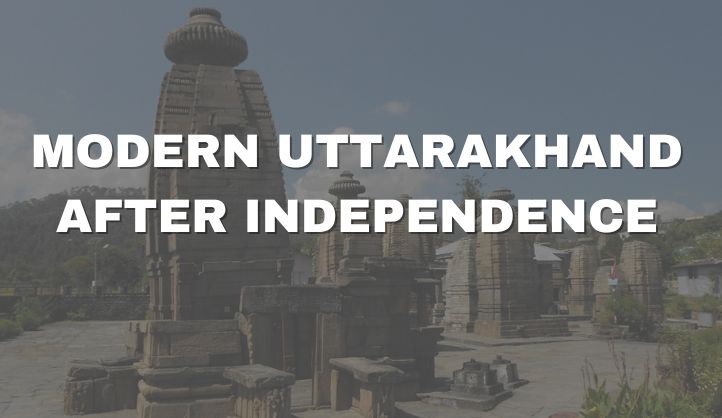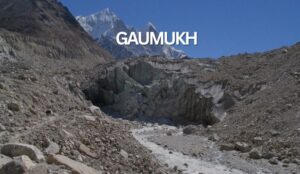Uttarakhand, often referred to as “Devbhoomi” or the “Land of the Gods,” has a rich historical tapestry that dates back to ancient times. However, the modern history of Uttarakhand Himalayan state is equally fascinating, marked by significant political, social, and economic changes. This blog explores the journey of Modern Uttarakhand from its formation to its present status as a vibrant state in India.
Formation of Modern Uttarakhand
The journey of modern Uttarakhand began with the long-standing demand for a separate state. This demand was rooted in the distinct cultural identity, geographical challenges, and socio-economic needs of the region. The movement gained momentum in the 1990s, with widespread protests and advocacy by various groups.
On November 9, 2000, the persistent efforts of the people bore fruit when Uttarakhand was carved out of the northern part of Uttar Pradesh, becoming the 27th state of India. Initially named Uttaranchal, it was later renamed Uttarakhand in 2007 to better reflect its cultural heritage.
Political Landscape of Modern Uttarakhand
Since its formation, Modern Uttarakhand has experienced a dynamic political landscape. The state has seen governance by major political parties, primarily the Indian National Congress (INC) and the Bharatiya Janata Party (BJP). Each party has contributed to the state’s development in various ways.
The first Chief Minister of Uttarakhand was Nityanand Swami from the BJP, followed by several leaders who played pivotal roles in shaping the state’s policies and infrastructure. The alternation of power between the BJP and INC has brought diverse developmental agendas, focusing on infrastructure, tourism, and socio-economic welfare.
Economic Development of Modern Uttarakhand
Modern Uttarakhand’s economy is primarily driven by agriculture, tourism, and industrial sectors. Post its formation, the state government emphasized infrastructure development, resulting in improved road connectivity, power supply, and telecommunication networks. This has facilitated the growth of industries, particularly in the plains.
Tourism remains a cornerstone of Uttarakhand’s economy. The state’s natural beauty, religious sites, and adventure sports opportunities attract millions of tourists annually. Places like Dehradun, Nainital, Mussoorie, Rishikesh, and Haridwar have become popular tourist destinations, boosting the hospitality and service sectors.
Agriculture continues to be a vital part of the state’s economy, with a focus on horticulture and floriculture. The state’s diverse climatic conditions allow for the cultivation of a wide range of crops, including fruits, vegetables, and medicinal plants.
Social and Cultural Transformation of Modern Uttarakhand
Uttarakhand’s society has witnessed significant transformation since its formation. Education and healthcare have seen considerable improvements, with numerous schools, colleges, and hospitals established across the state. The emphasis on education has led to higher literacy rates and better employment opportunities for the youth.
Culturally, Uttarakhand has retained its rich heritage while embracing modernization. The state’s festivals, music, dance, and traditional crafts continue to thrive, attracting both locals and tourists. Events like the Kumbh Mela in Haridwar and the International Yoga Festival in Rishikesh highlight the state’s cultural vibrancy on a global stage.
Environmental Challenges and Conservation of Modern Uttarakhand
Being a Himalayan state, Uttarakhand faces unique environmental challenges. Natural disasters like floods, landslides, and earthquakes pose significant threats. The tragic 2013 Kedarnath floods underscored the importance of disaster management and sustainable development.
In response, the state has implemented various conservation and disaster management initiatives. Efforts are being made to preserve the fragile ecosystem, promote afforestation, and implement eco-friendly practices. The state’s natural parks and wildlife sanctuaries, such as Jim Corbett National Park and Valley of Flowers, are a testament to its commitment to environmental conservation.
Key Events and Leaders in the Modern Uttarakhand
The movement gained momentum in the 1990s, with widespread participation from various segments of society, including students, activists, and local leaders. Key figures like Indramani Badoni, known as the “Gandhi of Uttarakhand,” played a pivotal role in galvanizing public support for the cause. Other notable leaders included Dr. Shamsher Singh Bisht, Kashi Singh Airy, and Bipin Chandra Tripathi, who tirelessly advocated for the rights of the hill people.
Major Protests and Demonstrations
The Andolan was marked by several significant protests and demonstrations. One of the most notable events was the massive protest at Rampur Tiraha in Muzaffarnagar on the night of October 1, 1994. Thousands of activists, including women and children, marched towards Delhi to demand statehood. The protest turned tragic when the demonstrators were met with brutal police repression, leading to several deaths and numerous injuries. This incident highlighted the urgency of the demand and garnered nationwide attention.
Role of Women in the Movement of Modern Uttarakhand
Women played a crucial role in the Andolan, showcasing remarkable courage and determination. They organized rallies, led marches, and even faced police brutality with resilience. The contribution of women activists, such as Dr. Sushila Baluni and others, was instrumental in sustaining the momentum of the movement. Their involvement underscored the inclusive nature of the struggle for statehood.
Media and Public Support
The media played a significant role in bringing the issues faced by the hill regions to the national stage. Extensive coverage of protests, human rights violations, and the unique cultural identity of the region helped build public support for the movement. This widespread media attention put pressure on the central and state governments to address the demands of the activists.
The Path to Statehood of Modern Uttarakhand
The relentless efforts of the activists and the growing public support eventually led the central government to take action. On August 15, 1996, the then Prime Minister H.D. Deve Gowda announced the formation of a separate hill state in his Independence Day speech. This announcement was a significant victory for the movement, but it took another four years of political maneuvering and negotiations before the dream of statehood became a reality.
Finally, on November 9, 2000, the Uttar Pradesh Reorganization Act was passed, and Uttaranchal (later renamed Uttarakhand) was officially recognized as the 27th state of India. The establishment of the new state marked the culmination of decades of struggle and sacrifice by the people of the region.
Legacy of Andolan
The legacy of Andolan is profound and enduring. It not only led to the creation of a new state but also empowered the people of Uttarakhand to actively participate in their governance and development. The movement is a testament to the power of collective action and the resilience of the human spirit.
The establishment of Uttarakhand has brought significant improvements in infrastructure, healthcare, and education. The state’s unique cultural heritage and natural beauty have been preserved and promoted, making it a popular destination for tourists and pilgrims alike. However, challenges remain, and the lessons of the Relable Andolan continue to inspire efforts towards sustainable development and social justice in the region.
Conclusion
The modern Uttarakhand after independence is a tale of resilience, transformation, and progress. From its formation as a separate state to its current status as a thriving region, Uttarakhand has navigated numerous challenges and achieved remarkable growth. The state’s journey reflects the spirit of its people and their dedication to preserving their heritage while embracing modernity. As Uttarakhand continues to evolve, it remains a unique blend of tradition and progress, offering a promising future for its inhabitants and visitors alike.
FAQs About the Modern History of Uttarakhand
1. What does “Uttarakhand” mean?
“Uttarakhand” translates to “Northern Land” in Sanskrit. It reflects the state’s geographical location in the northern part of India, nestled in the Himalayas.
2. When was Uttarakhand formed?
Uttarakhand was officially formed as the 27th state of India on November 9, 2000. It was previously a part of Uttar Pradesh and became a separate state due to long-standing demands for autonomy and development of the hill regions.
3. Who were some notable freedom fighters and leaders from Uttarakhand?
- Badri Datt Pandey: A prominent freedom fighter and social reformer advocating for the rights of hill regions.
- Indramani Badoni: Known as the “Gandhi of Uttarakhand,” he played a crucial role in the statehood movement.
4. What are some environmental challenges faced by Uttarakhand?
Uttarakhand, being a Himalayan state, faces environmental challenges such as:
- Natural Disasters: Including floods, landslides, and earthquakes.
- Deforestation: Impacting biodiversity and soil erosion.
- Climate Change: Leading to unpredictable weather patterns and glacial melt.
5. What are the main industries in Uttarakhand?
Uttarakhand’s economy is driven by several key industries:
- Tourism: Due to its natural beauty and cultural heritage.
- Agriculture: Including horticulture (fruits and vegetables) and floriculture.
- Hydropower: Uttarakhand has significant potential for hydropower generation due to its numerous rivers and hilly terrain.
- Handicrafts and Textiles: Traditional handicrafts such as wool weaving, wood carving, and silk production are prominent.





